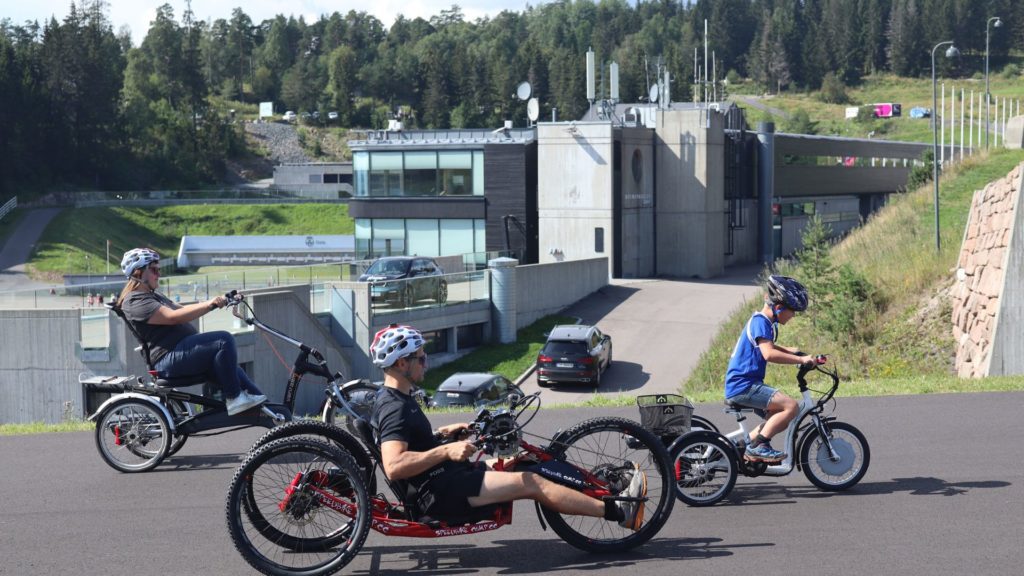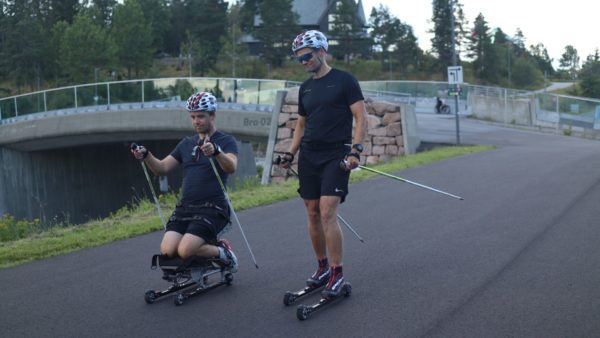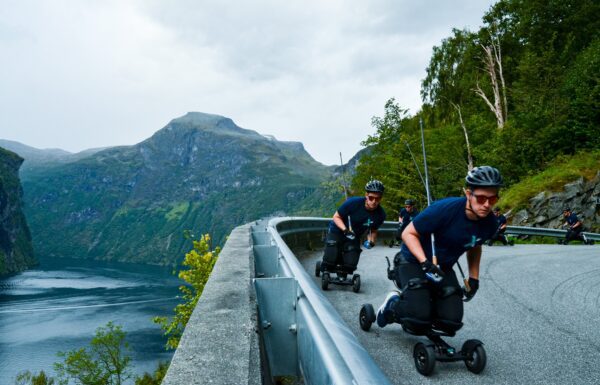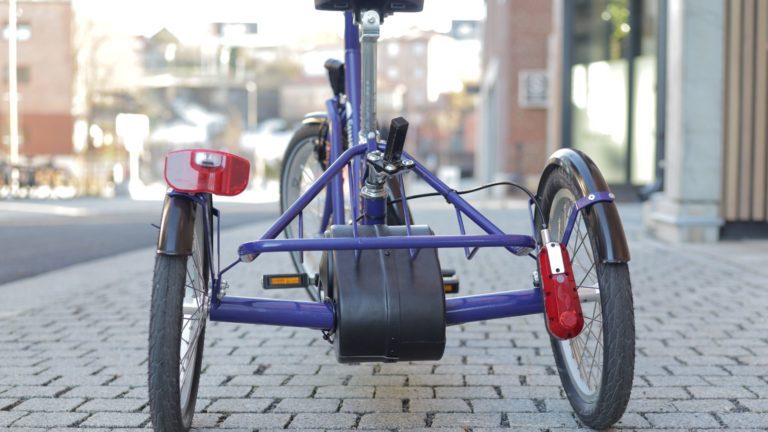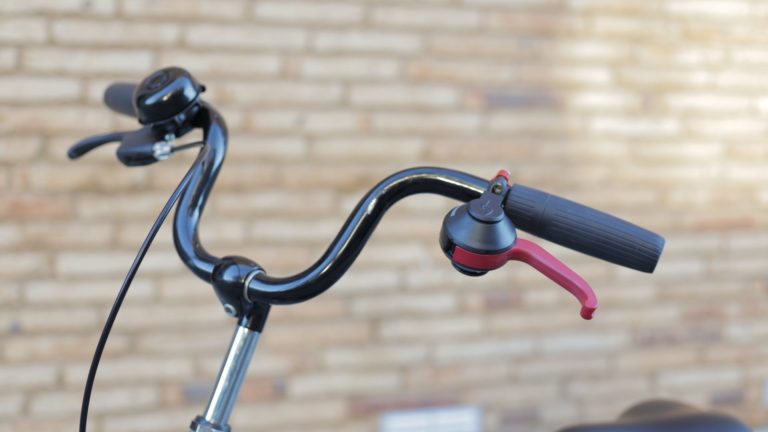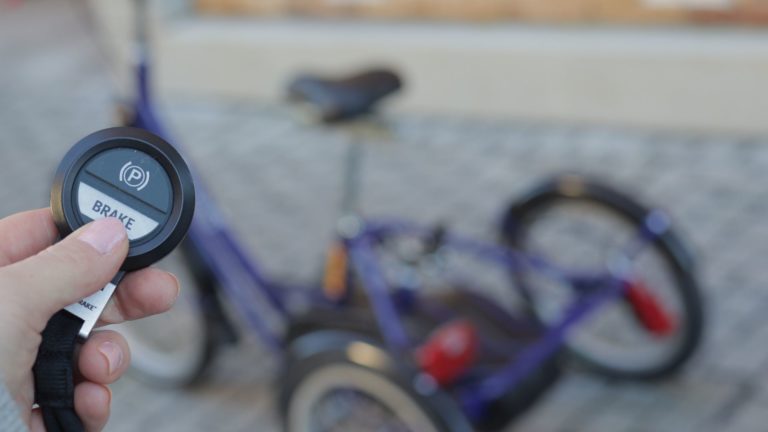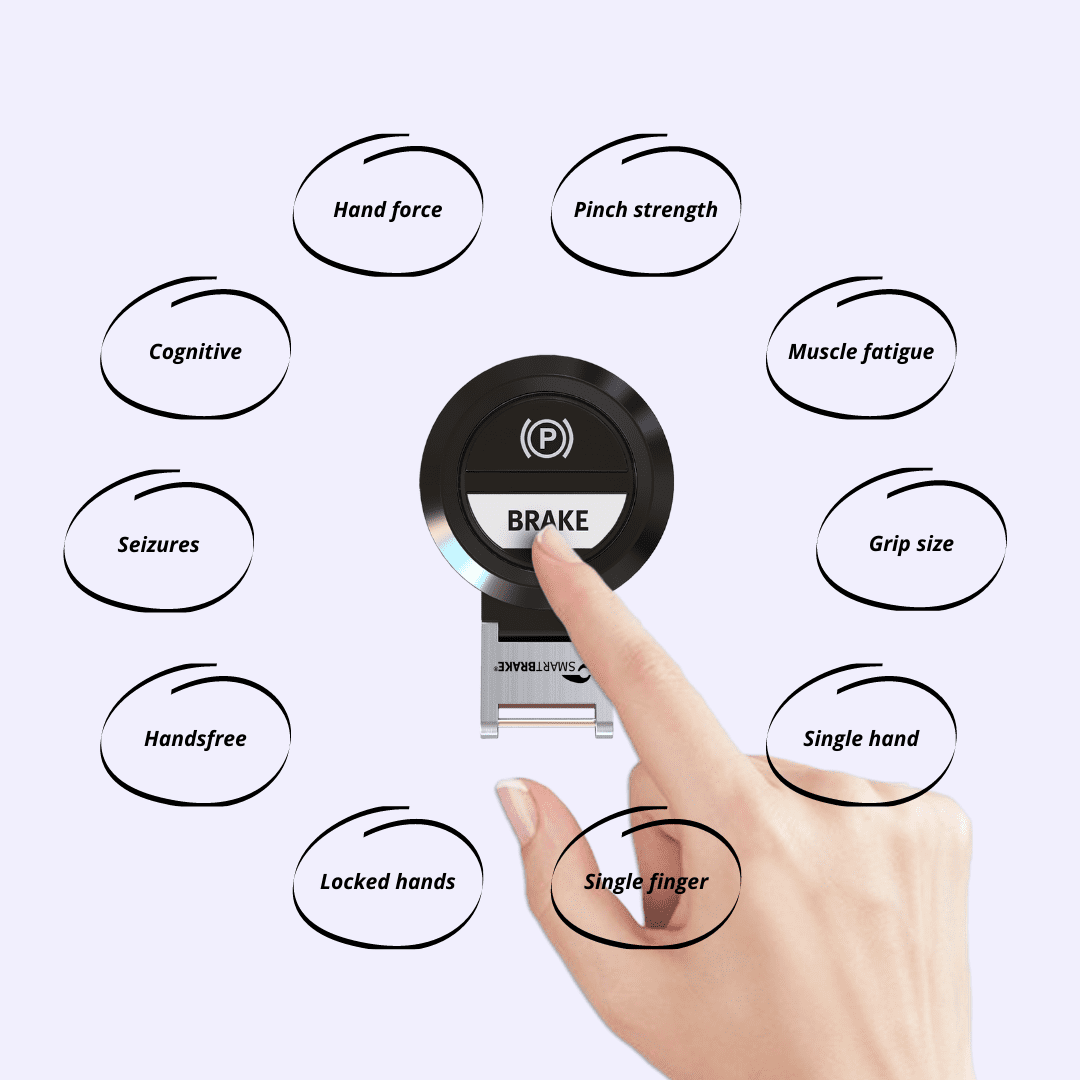
The Handgrip Challenge
In 2018-2019, we conducted a user study together with a leading Norwegian rehabilitation center. The purpose was to identify the need for better bicycle brakes adapted for people with disabilities. The study confirmed our hypotheses that many people struggle to use traditional brakes, and we have later conducted studies of similar user needs at an international level. The figure below shows how many people globally have impaired hand function due to illness or other disorders. These conditions affect their ability for health-promoting activity and mobility in everyday life, in addition to perceived coping and quality of life.
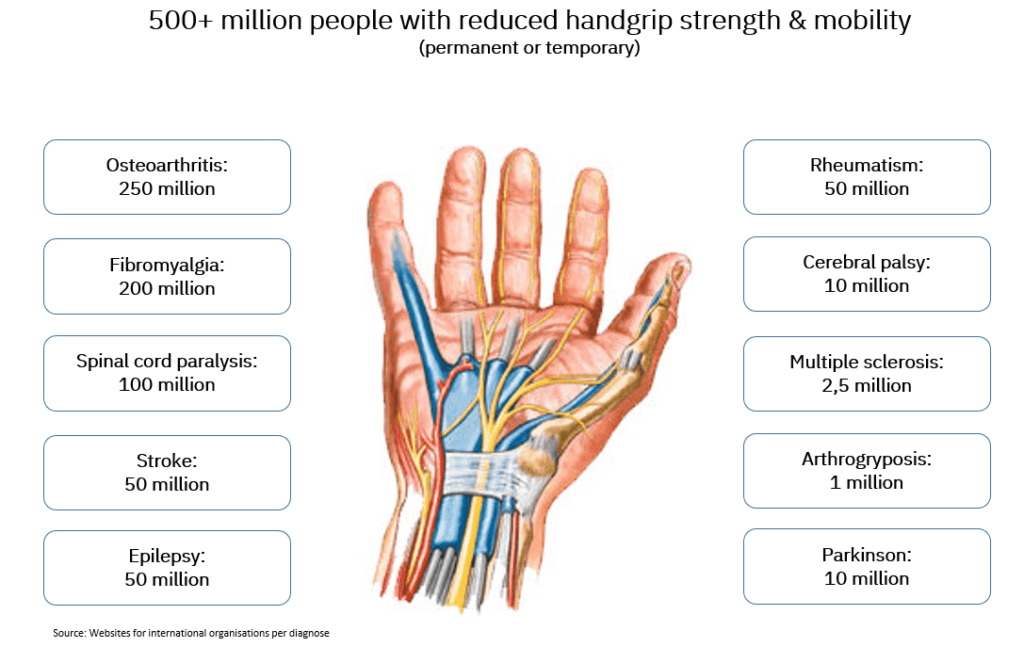
The challenge with brakes that do not fit user needs applies not only to people with illness or disabilities. Norwegian media had addressed this issue in several articles, both on children’s bikes and electric bikes.
So what is it that affects people’s ability to use traditional brakes? In SmartGroup, we work with this issue continuously, and we become wiser for every user need and every bike we study. We do not have final answers, but we have uncovered several factors we believe are essential. In this article, we briefly highlight the ten most common aspects.
As part of our learning process, we would like your feedback and thoughts on this. Feel free to contact us for a professional discussion.
1. Hand force
Measuring the maximum hand force a person can achieve is the most common parameter that indicates whether one has a challenge with a bicycle brake. A mechanical brake typically requires 5-7kg of manual power to reach 100% brake. As the graph below shows, most non-disabled people above 7-8 years of age have this maximum hand power, regardless of gender (Source and method). For the youngest children, it is well known that they have problems activating mechanical brakes.
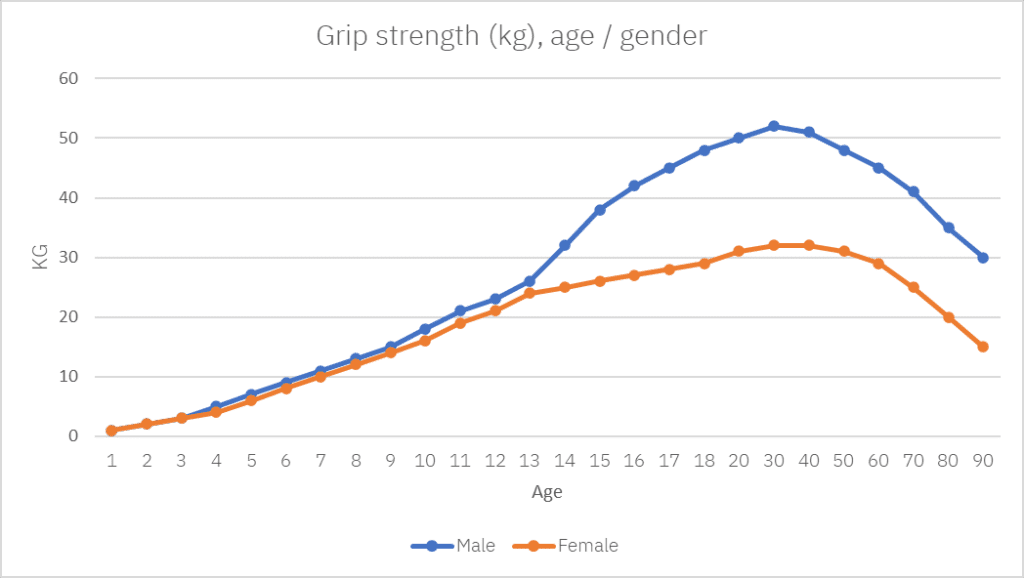
We also have many users who have temporarily or permanently reduced maximum manual power due to disease, paralysis, nerve disorders, inflammation, etc. These conditions can affect both hands or one hand.
In the development of SmartBrake, we have been particularly concerned with hand power. Activation of both brake and parking can require less than 10% of standard hand force.
2. Pinch strength
In addition to hand strength, the grip is crucial for handling a traditional brake. Many users may have high maximum hand force but reduced pinch strength (index finger, thumb). Reduced fine motor skills could affect the ability to grip/hold around a brake lever.
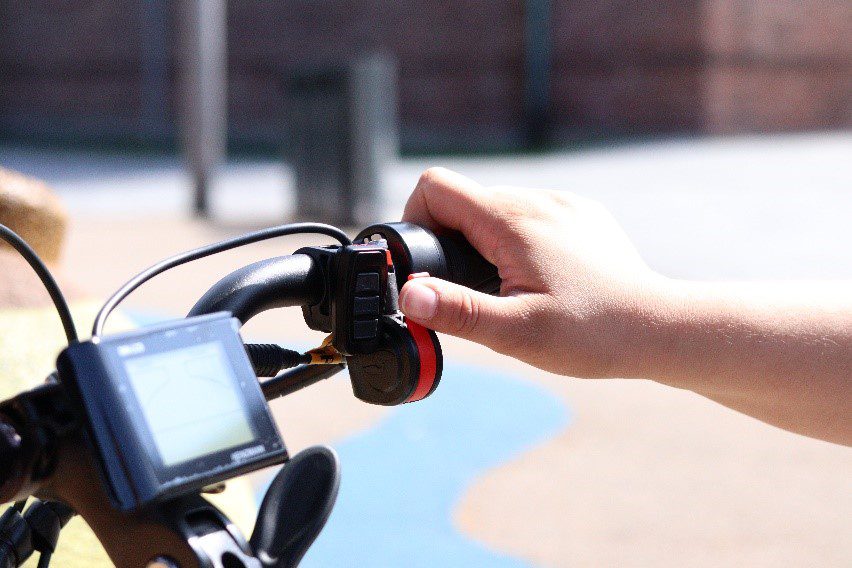
SmartBrake has developed a brake where the user can activate the brake by light pressure with the thumb or other finger.
3. Muscle fatigue
Tired and stiff muscles reduce responsiveness and maximum hand force. Several factors affect muscle fatigue, e.g., temperature (cool weather) and prolonged repetitive movements / static positions. Braking on a bicycle usually takes place over time, for example, repeated braking within a shorter time interval. Studies in other sports show a significant reduction in muscle responsiveness and fine motor skills by repeating the same exercise for only 30 seconds; About 30% reduction for a healthy person, about 50% for someone with a disability.
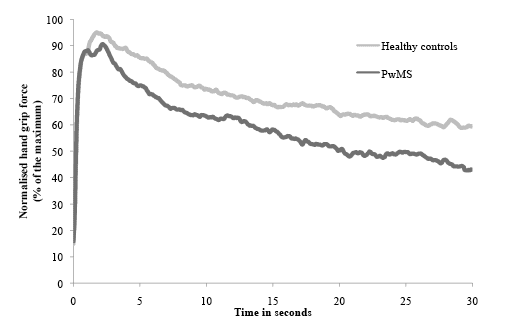
4. Grip size
The vast majority of brakes fit adult, healthy hands. Many users have too small a grip for these brakes, either due to naturally smaller hand size, shorter fingers, or fingers that cannot stretch to full length. These factors affect the ability to grip around a brake lever safely and effectively.
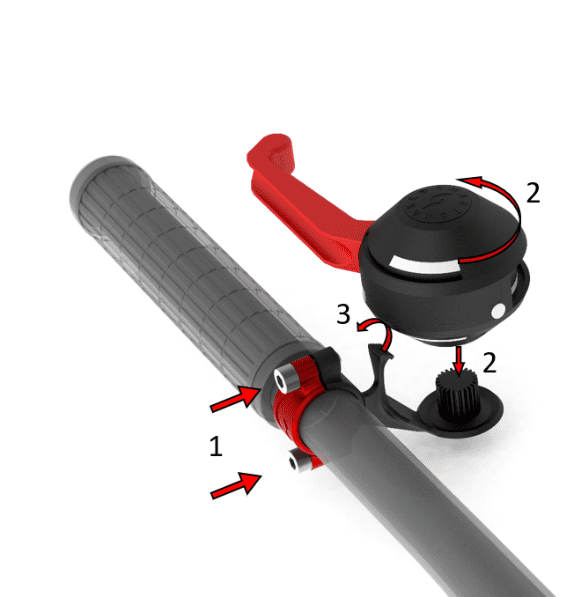
SmartBrake has developed a brake lever that is adjustable to smaller grips.
5. Single hand
People with only one working hand (paralysis, amputation, etc.) often have problems operating on a bicycle’s front and rear brakes. There is limited space for mounting two mechanical brake levers on the same side of the handlebars, and which the user can activate at the same time if necessary.
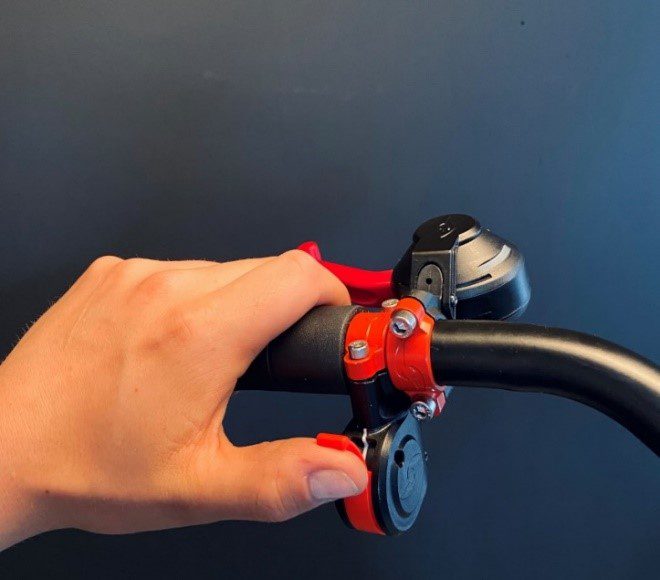
The SmartBrake thumb brake is compact and can fit together with a standard brake lever. The user can easily activate both brakes at the same time without changing grips.
6. Single finger
In some projects, we see that users only can activate the brake with one finger. Most mechanical brakes will require considerable force to use by one finger, especially over time.
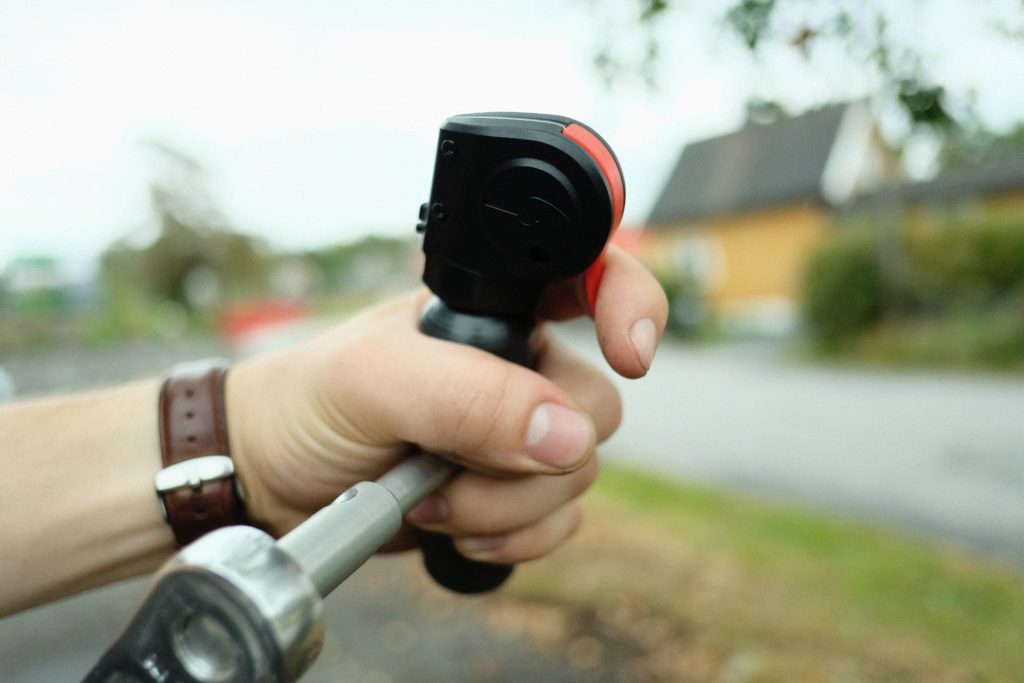
SmartBrake thumb brake can also be mounted to activate it with the index finger or other functional finger. The parking brake is also easily triggered by the same finger.
7. Locked hands
Handcycle users often attach their hands in special grips (e.g., tetra grips) to the handlebars, with limited ability to move fingers and hands. Activation of the brake lever and parking brake is often tricky.
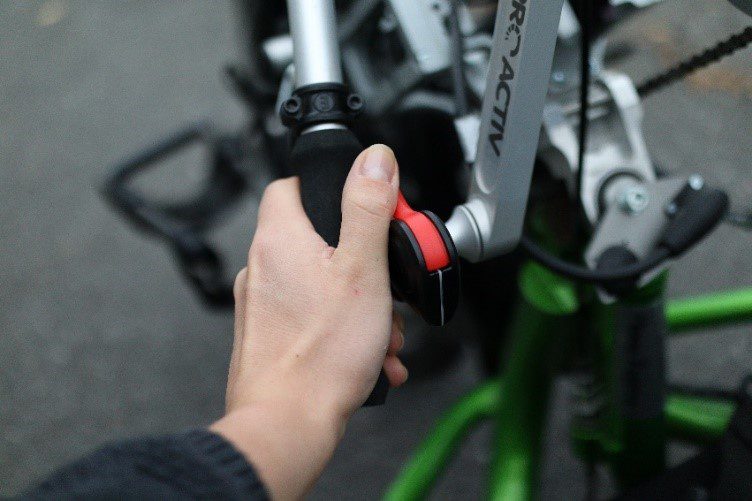
SmartBrake can be mounted to tetra grips and other handles for handcycles, ensuring easy and safe brake access.
8. Handsfree
For a selection of handcycle users, it is not possible to activate the brake with their hands. They must use other body parts.
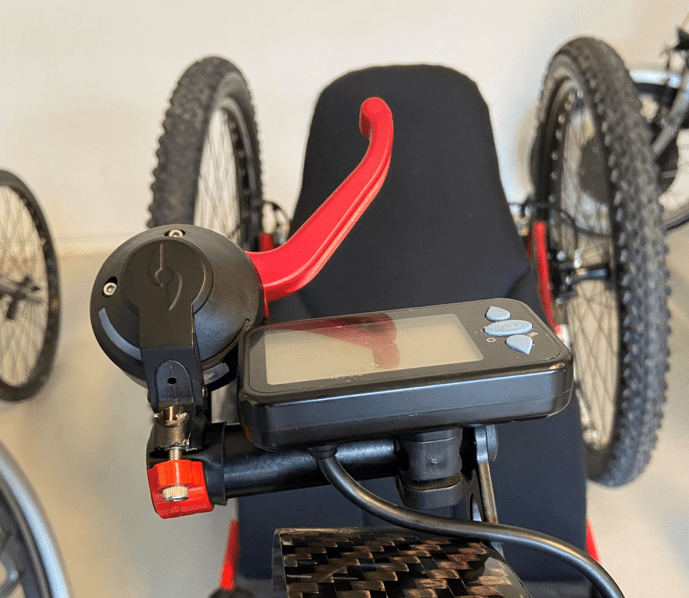
SmartBrake can be mounted on the center console on the handcycle, for easy and safe braking with the chest or chin. For other users with functions in the legs, the lever can fit nearby the knees.
9. Seizures
People with unexpected seizures (epilepsy, Parkinson’s, etc.) may have problems with safe cycling. Most brakes require the user to activate the lever, which is difficult in the event of a sudden attack.
SmartBrake can be reversed so that it acts as an opposite brake. The user can squeeze the lever with the thumb to release the brake. If the user has a seizure and releases the handlebars, the brake will automatically activate and stop the bike safely and controlled.
10. Cognitive failure
Companions are often involved in activating the brake for users due to cognitive impairment or other conditions that result in a slower ability to react or understand the traffic picture. Traditionally, this has worked by the companion holding the bike, e.g., with a stay or rope.
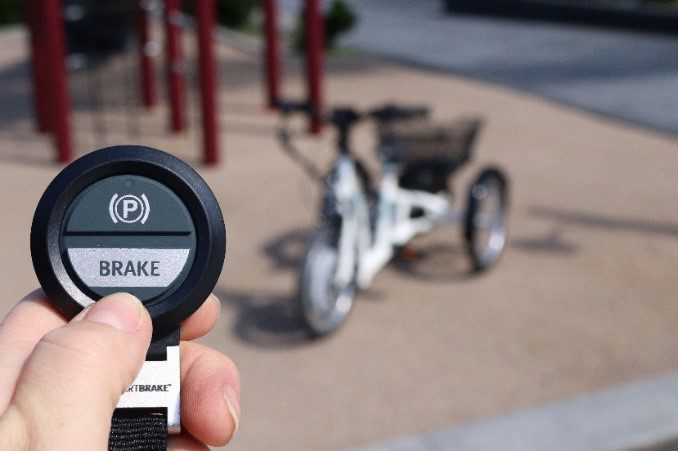
SmartBrake can be delivered with wireless companion control, allowing the companion to control the brakes from up to 30m. The user can also activate the same brakes. If the distance increases beyond 30m, the brakes will be activated automatically. The companion can also park from a distance.
Literature and sources:
https://www.stk-sport.co.uk/gymnastics-science-physical-fitness-norms-handgrip-test.html
https://www.rch.org.au/uploadedFiles/Main/Content/ot/InfoSheet_E.pdf
https://www.ncbi.nlm.nih.gov/pmc/articles/PMC2795831/
https://journals.sagepub.com/doi/full/10.1177/1403494818769851
https://www.performancehealth.com/articles/why-grip-strength-norms-are-important-for-children
https://www.performancehealth.com/media/wysiwyg/blog/articles/handgrip-strength-research-report.pdf
https://agmr.hapres.com/htmls/AGMR_1159_Detail.html
https://www.bicycling.com/news/a36279101/link-between-grip-strength-and-mobility-study/





